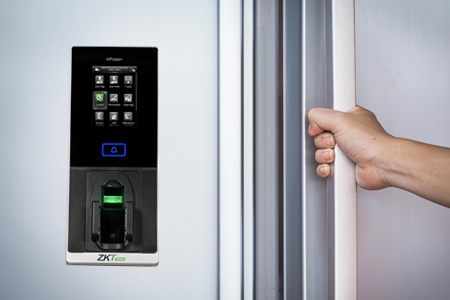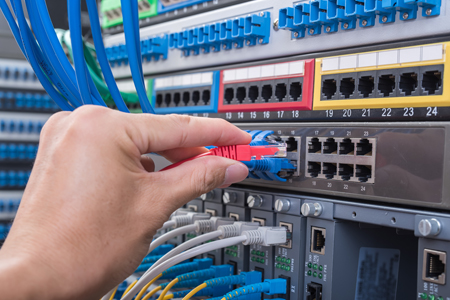Advanced PBX Features-
Now that you know what your default PBX system is able to do, it is time to explore the extent of PBX’s versatility. In this section we will cover more advanced PBX features which when properly integrated will provide your company with the capability to track user locations, transfer voicemail messages to email accounts and accept VoIP calls.
8. Consolidation: One of the more popular advanced PBX features takes on the “unified messaging” role, bringing together all of your telecommunications devices into a single convenient system. “PBX can bring together your cell phones, analog phones, VoIP phones, email, voicemail, IM, chat, video calling and more.” The technology works by linking all of your office devices together, and messages you on the appropriate device based upon your availability. The PBX system might try your cell phone first, your office phone next, the conference room, or maybe all 3 at the same time, depending on your settings. Whatever the case, the PBX system knows how to get a hold of you, and you should use that capability to your company’s advantage.
If your employees are on the road and need their cell phones to act like their office phone, your PBX can do it. PBX consolidation gives you the freedom to work wherever you see fit and still receive all the unique telephony features PBX has to offer including line extensions, conference calling, call forwarding, etc. If your company isn’t currently incorporating consolidation technology into the PBX system, it is losing significant time and money by having “out of office” equal “out of touch” when it comes to your employees.
9. Personnel Locator: After consolidating all of your PBX features into one unique system, you are on the way to having a fully-functional mobile workforce. But what happens when you need to know exactly where one of your employees is? Not to worry, PBX systems can keep track of where your employees last interacted with the system, data that will allow you to pinpoint their exact location.
10. Email Integration: Modern PBX systems have the ability to merge with email clients (such as Microsoft Outlook) and retrieve contact information on the various customers you are on the phone with. Once a call is received, the name and phone number of the customer is automatically matched with existing records in your email contact database and their complete customer profile is brought up on the screen. From there you can get a more thorough idea of who you’re dealing with and will know how to better serve their needs.
PBX telephony also boasts the capability to transfer company employees’ voicemail messages to their company email account. The messages are sent in easy to access audio files and allow employees to store and manage all of their voice mailbox contents.
11. Total “Business Intelligence” Integration: If you’ve successfully integrated email into your PBX system why not take it a step further and integrate your entire business intelligence operation? PBX systems have the ability to communicate with your computer and the customer databases you keep on that computer. To merge the databases and PBX, simply take the call information from your customer, probe the database and presto — you now have all of that customer’s contact information, previous interactions, purchase history, etc.
Properly incorporating business intelligence and your PBX will allow for more streamlined and targeted customer relations, as employees will immediately know background information about the customer, that customer’s history with the company, past issues they have had and whether they have been flagged as a particularly important or problematic client.
One of the ways you can take advantage of this technology is by analyzing your customer’s purchasing records and determining what they’ll need next as the call takes place. At the same time the call is taking place, you can email the customer quotes about your latest products that are related to previous orders he or she has placed, as well as go over these new products during that same call. Thus, the integration of “real time” accessible business intelligence data will allow you not only to better serve your clients, but it will also allow you to predict which products they might be interested in and use the call as an opportunity to pitch those new products.
12. Call Routing: Advanced PBX functionality allows for calls to be routed based upon certain criteria including caller importance, length of wait, time of day, day of week, etc.
For example, if the president of your company is calling for sales statistics it’s probably not a good idea to have him wait in the standard customer queue. Likewise, if someone is calling after certain departments are closed it’s probably better to patch them through to the operator rather than have them traverse 2 minutes worth of menus to find out the bad news.
Just as with call holding, caller mapping is the key to an efficient call routing scheme. Unless you know all the variants of calls the your company receives, you cannot begin to create a PBX routing system that will properly treat all of those callers.
13. Analog vs. IP Phones: To provide the greatest range of flexibility, modern PBX systems are able to direct calls through both analog and IP based phones. Both types of calls have their cost and service advantages. Consequently, it is important to setup your PBX so that calls which are more cost-efficient through VoIP (many long-distance calls) are routed through it, while calls that would benefit from the quality of analog are directed through those lines. It is rare to find companies that over utilize VoIP calling. As a starting point, begin by examining your analog calling for inefficiencies, rather than the other way around.
14. IP Multimedia Subsystem (IMS): To take your PBX system to the next level you should make sure it has the technology to provide IMS functionality. IMS allows users to send and receive multiple types of media across a network rather than just hearing voice on a standard PBX system, or reading text on a SMS system. For instance, you could video conference or give an extensive presentation in real time.
This article was designed to introduce you to some of the many standard and optional capabilities that PBX systems offer. With your new found knowledge, you should be well on your way to identifying the areas where optimizing your PBX system can help to improve your company’s efficiency, customer relations and profitability.
For more information on VoIP, and VoIP Samsung phone system and Mitel VoIP phone systems, please click the links or simply visit us at www.comtex-nj.com


